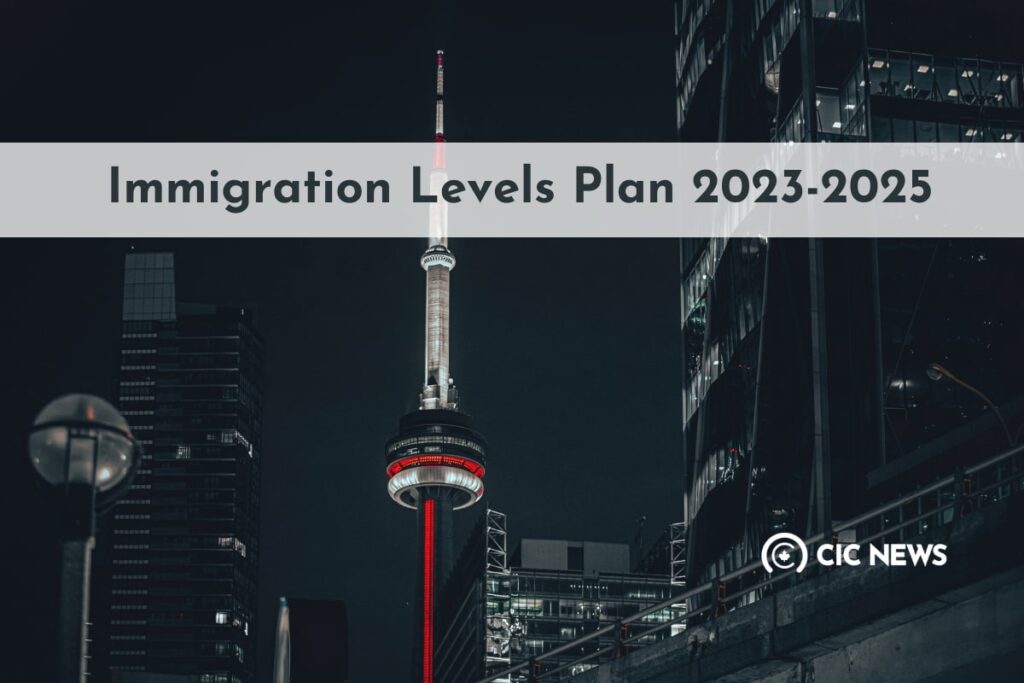Canada to welcome 500,000 new immigrants in 2025

Canada has just released its Immigration Levels Plan 2023-2025.
Canada will aim to welcome 465,000 new immigrants in 2023.
The target will rise to 485,000 new immigrants in 2024.
It will further rise to 500,000 new immigrants 2025.
Canada broke its all-time immigration record by welcoming over 405,000 immigrants in 2021 and is looking to welcome nearly 432,000 immigrants this year.
The Immigration Levels Plan acts as a guide for the number of immigrants Canada aims to welcome each year. Canada's immigration goals include growing the economy, reuniting families, and offering asylum to refugees fleeing hardship abroad.
Discover if You Are Eligible for Canadian Immigration
Express Entry and PNP targets will rise
The majority of new permanent residents immigrate through economic class programs such as those within the Express Entry system or through Provincial Nomination Programs (PNPs).
The targets for Express Entry landings (principal applicants, spouses, and dependents) will rise as follows:
- 82,880 in 2023
- 109,020 in 2024
- 114,000 in 2025
The PNP will remain Canada's leading admissions program for economic class immigrants and targets will also increase to:
- 105,500 in 2023
- 110,000 in 2024
- 117,500 in 2025
Higher PGP admissions
IRCC also has a mandate to reunite families. After economic class programs, family class sponsorship is the second largest permanent residence class set out by the Immigration Levels Plan. Under family class immigration programs, applicants are sponsored for permanent residence by a spouse, partner, children, or other family member.
Canada will continue to look to welcome some 80,000 new immigrants per year under the Spouses, Partners and Children program.
Targets for the Parents and Grandparents Program will rise to 28,500 in 2023, followed by 34,000 in 2024, and 36,000 in 2025.
Refugee and humanitarian class targets to decline
Refugees and humanitarian class immigrants also have an allocation under the Immigration Levels Plan. Canada has a long-standing reputation of extending asylum to displaced persons fleeing unsafe situations in their home countries.
Canada currently has high humanitarian class targets due to its ongoing efforts to complete several campaigns such as welcoming some 40,000 refugees from Afghanistan.
The overall refugee class target will be just over 76,000 new landings in each of 2023 and 2024, before dipping to 72,750 in 2025.
The same goes for the humanitarian class target which is declining from nearly 16,000 in 2023 to 8,000 in 2025.
Discover if You Are Eligible for Canadian Immigration
Canada’s immigration strategy
Canada’s current immigration strategy began to take its current form in the 1980s. At that time, the government did not look as far into the future and often based immigration targets on the economy of the day.
In 1984, Canada welcomed fewer than 90,000 immigrants. Leading into the 1990s, the Canadian government under the Conservatives recognized the impending shortage of labour and increased immigration targets to 250,000 new permanent residents in the space of eight years.
The following Liberal government built on these targets but due to an economic recession, also began to place more emphasis on inviting newcomers more economic class immigrants and reducing Canada’s family and humanitarian class shares.
Canada welcomed some 260,000 immigrants annually until current Liberal government took power in 2015. The targets were increased to 300,000, followed by 340,000 right before the onset of the COVID-19 pandemic in 2020.
The closure of borders and other travel restrictions in 2020 made it difficult for IRCC to process applications. Still, Canada exceeded its 2021 immigration target and broke the record for the most permanent residents invited in a year, at 405,000. These targets were reached through large allocations of spots through the Canadian Experience Class and Provincial Nomination Programs (PNPs).
Canada is currently in a unique period where there is a labour shortage alongside nearly one million job vacancies. Both are driving factors in the country’s growing immigration targets.
Labour shortages are further impacted by Canada’s low birth rate of 1.4 children per women, one of the lowest globally. Due to the slow natural increase in the population (the number of births still exceeds the number of deaths each year), immigration will soon be the only way that Canada’s population and labour force will be able to grow. Newcomers are also needed to maintain a strong tax base, which is a key factor in Canada’s efforts to provide essential services such as education and healthcare.
Canada has one of the world’s oldest populations. Approximately nine million people, or nearly a quarter of Canada’s population, will reach retirement age by 2030. This will create an urgent shortage of workers throughout all sectors of the economy.
The government must announce the Immigration Levels Plan each year by November 1 as per the Immigration and Refugee Protection Act (IRPA), which is Canada’s main immigration law. However, the 2022-2024 immigration levels plan was the second announced in 2022, the first occurred in February after the most recent federal election on September 20, 2021, caused the 2021 announcement to be delayed.
Discover if You Are Eligible for Canadian Immigration
© CIC News All Rights Reserved. Visit CanadaVisa.com to discover your Canadian immigration options.
- Do you need Canadian immigration assistance? Contact the Contact Cohen Immigration Law firm by completing our form
- Send us your feedback or your non-legal assistance questions by emailing us at media@canadavisa.com






